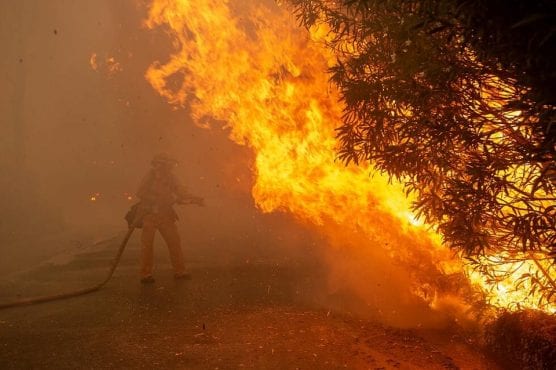By Nathan Solis
California wildfires will become more severe in the future as warmer temperatures give way to drier summers, a decrease in the amount of snow at higher elevations despite above average rainy seasons and, possibly, because humans are too good at putting blazes out, according to a study published Monday in the Proceedings of the National Academy of Sciences.
The study shows that improvements at suppressing forest fires, rather than letting them run their natural course, has led to forests bursting with underbrush and crowded trees.
Researchers reconstructed 400 years of climate data to determine what causes wildfires in California and found many of the elements that would have pointed to a strong, wet winter would have led to a weaker wildfire season.
But that has not been the case recently as the last few years of insurmountable wildfires in California has been any indication.
Despite a wetter than average winter in 2016-2017, California experienced over 9,000 wildfires in 2017 that burned over 1.3 million acres across the Golden State – including the Thomas Fire, which burned over 280,000 acres across Los Angeles, Ventura and Santa Barbara counties and was at the time the largest in modern state history. Less than a year later, the Mendocino Complex Fire in Northern California burned over 459,000 acres to set a new record.
Researchers examined the northern Pacific jet stream, an air current in the atmosphere that passes over the western United States and brings rain and snow at higher elevations.
According to historic climate data, in extremely dry years the California city of Redding saw some of the strongest winter-jet winds pass through and raise wildfire risks. But in wet winter years the strongest winter-jet stream winds centered around Los Angeles, bringing lower wildfire danger.
That model held true until the 1900s, when the relationship between the wet season was divorced from wildfires in part because humans began suppression efforts. Put more simply, the jet streams have remained consistent – California’s wildfire seasons have not.
“The last three years may be a harbinger of things to come,” said Alan Taylor, professor of geography at Pennsylvania State University and co-author of the wildfire study. “Between 1600 and 1903 there was not a single case of a high-precipitation year coupled with a high-fire year as occurred in 2017.”
Taylor said rising temperatures in recent decades also played a part and have dried brush and vegetation faster in the spring and summer, making the landscape more flammable even during a wet year.
The warming period, coinciding with better fire suppression efforts by humans, has increased the amount of fuel available to burn. In Redding, where summer highs can reach above 115 degrees Fahrenheit, a deadly wildfire in 2018 whipped up a fire tornado that ripped the bark off trees with winds up to 165 mph.
Taylor told Courthouse News in an email that humans can manage vegetation by using a combination of controlled burns and tree trimming, adding, “We can’t manage climate and weather.”
The study was co-written with researchers from the Centre for Materials and Coastal Research in Germany, Climate System Analysis and Prediction Cluster of Excellence at the University of Hamburg, the University of Arizona, Tucson, and National Oceanic and Atmospheric Administration’s National Centers for Environmental Information.
Like this:
Like Loading...
Related





 Tweet This
Tweet This Facebook
Facebook Digg This
Digg This Bookmark
Bookmark Stumble
Stumble RSS
RSS


























REAL NAMES ONLY: All posters must use their real individual or business name. This applies equally to Twitter account holders who use a nickname.
0 Comments
You can be the first one to leave a comment.